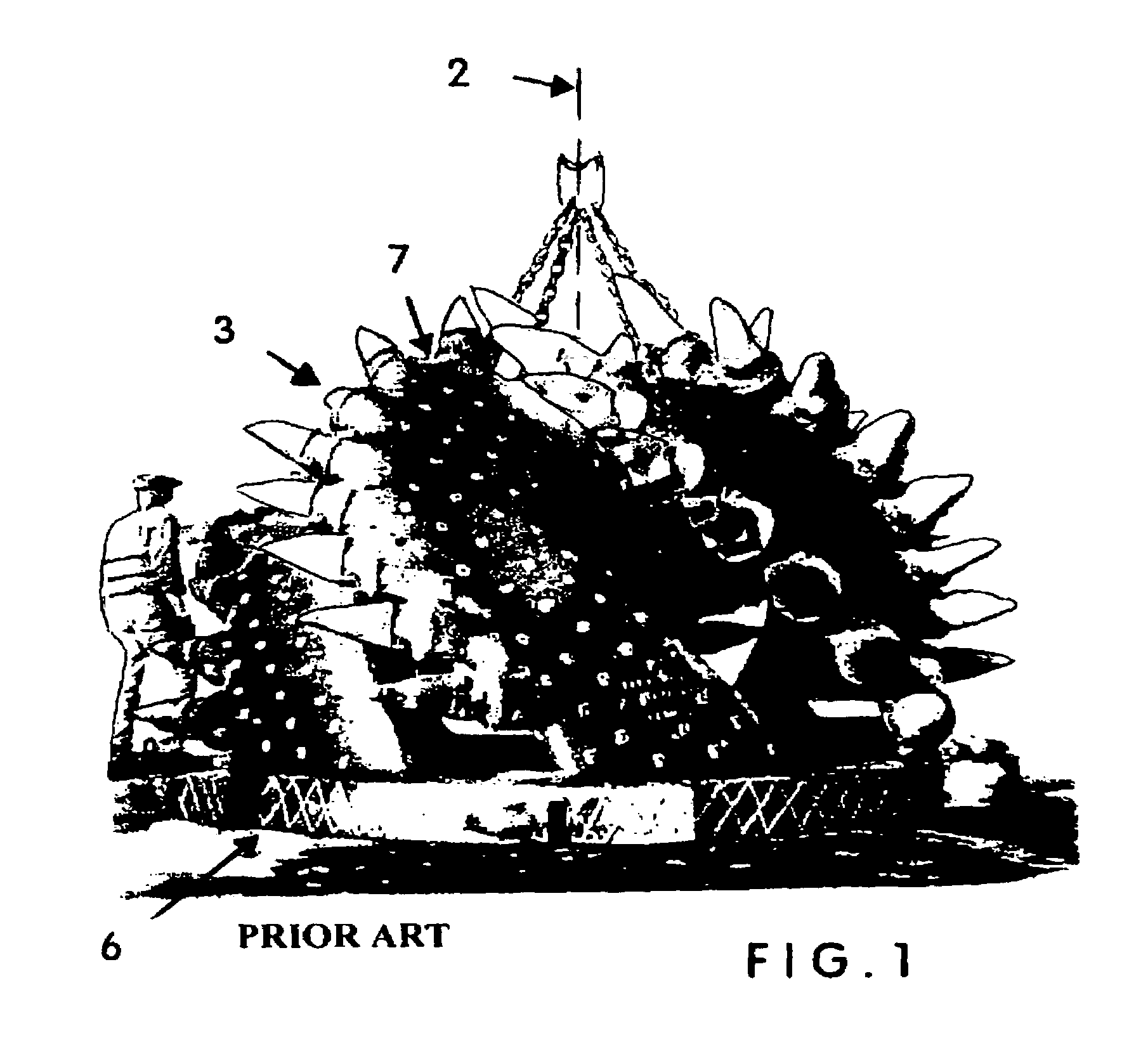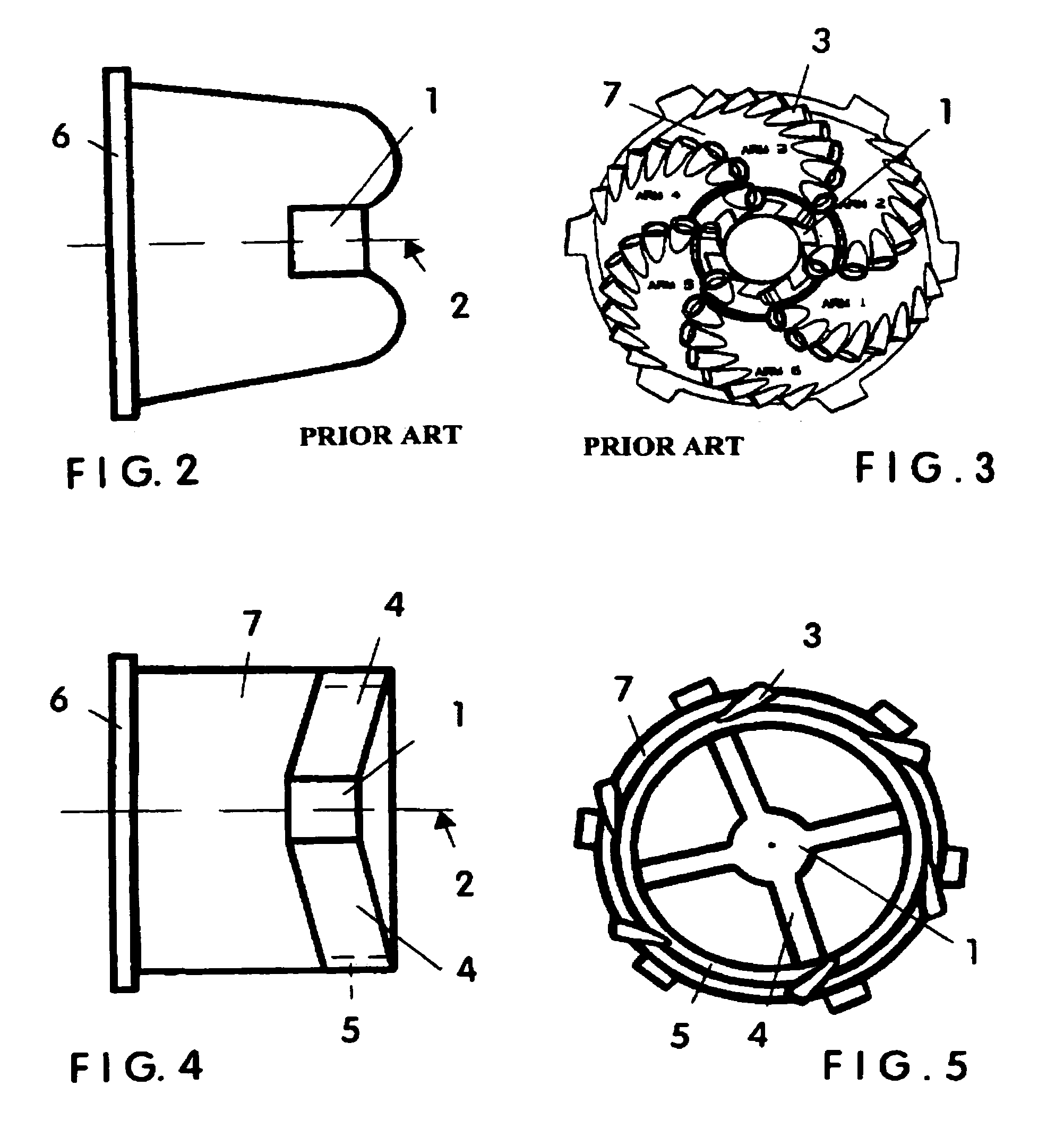Optimized kinetic energy machine for excavating underwater rock
a kinetic energy machine and underwater rock technology, applied in mechanical machines/dredgers, soil shifting machines/dredgers, surface mining, etc., can solve the problems of excessive tooth and adaptor failure of prior art cutters of underwater rock, and achieve the effect of minimizing excavating parts failure, adequate tooth velocity, and increasing the capacity and effectiveness of rock excavators
- Summary
- Abstract
- Description
- Claims
- Application Information
AI Technical Summary
Benefits of technology
Problems solved by technology
Method used
Image
Examples
Embodiment Construction
[0021]Detailed descriptions of the preferred embodiment are provided herein. It is to be understood, however, that the present invention may be embodied in various forms. Therefore, specific details disclosed herein are not to be interpreted as limiting, but rather as a basis for the claims and as a representative basis for teaching one skilled in the art to employ the present invention in virtually any appropriately detailed system, structure or manner.
[0022]FIG. 1 shows a large, state-of-the-art dredge rock cutter which has had some success excavating underwater rock, but which has been hampered by excessive adaptor and tooth failure, resulting in high costs per cubic yard of rock excavated. The parts failure involved the first five teeth of the eight teeth on each blade, counting from the top (closed end) of the cutter. These teeth are closer to the cutter rotational axis 2 and are subject to higher drive forces than the teeth located farther from cutter rotational axis 2. For ex...
PUM
 Login to View More
Login to View More Abstract
Description
Claims
Application Information
 Login to View More
Login to View More - R&D
- Intellectual Property
- Life Sciences
- Materials
- Tech Scout
- Unparalleled Data Quality
- Higher Quality Content
- 60% Fewer Hallucinations
Browse by: Latest US Patents, China's latest patents, Technical Efficacy Thesaurus, Application Domain, Technology Topic, Popular Technical Reports.
© 2025 PatSnap. All rights reserved.Legal|Privacy policy|Modern Slavery Act Transparency Statement|Sitemap|About US| Contact US: help@patsnap.com



